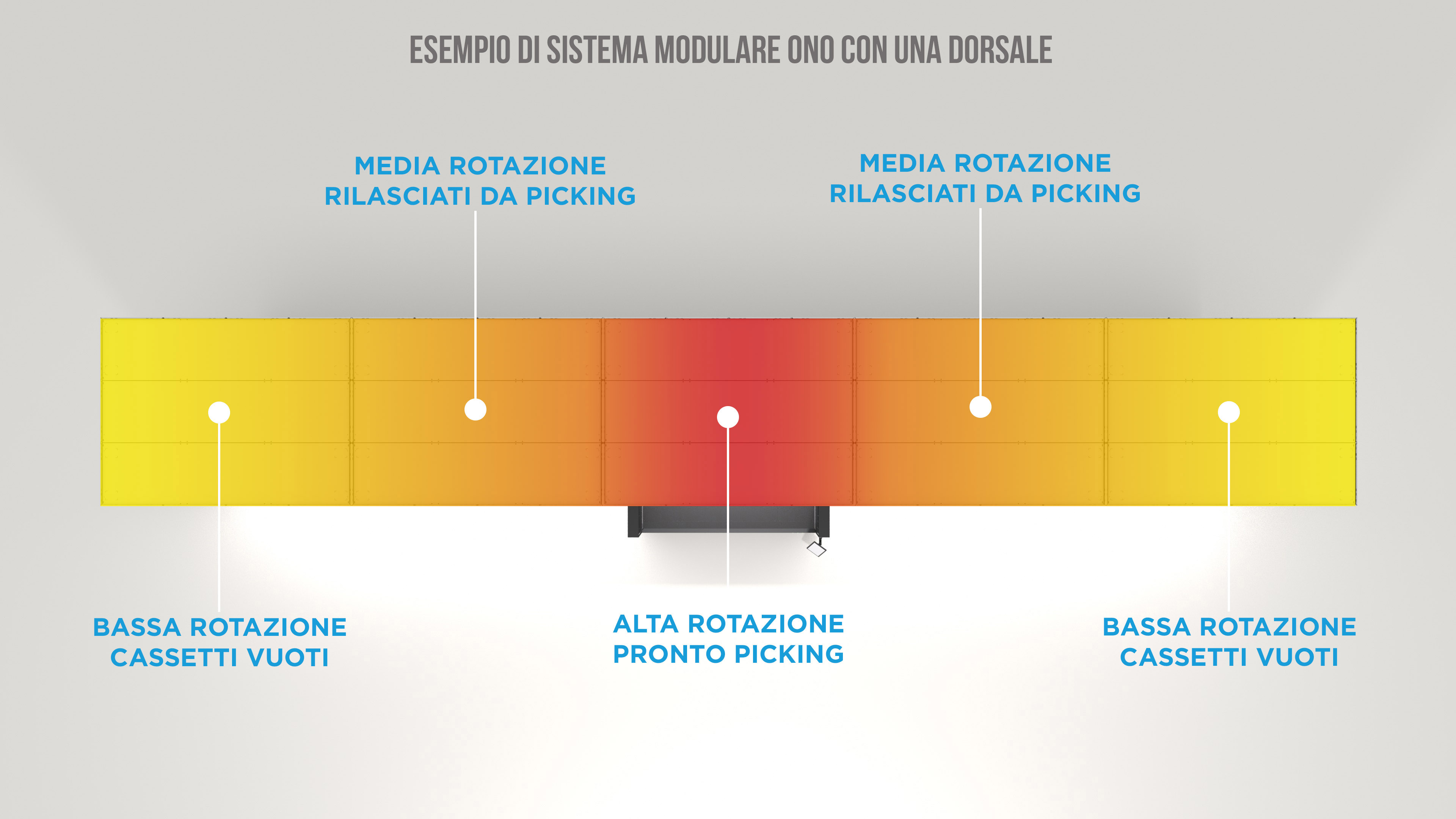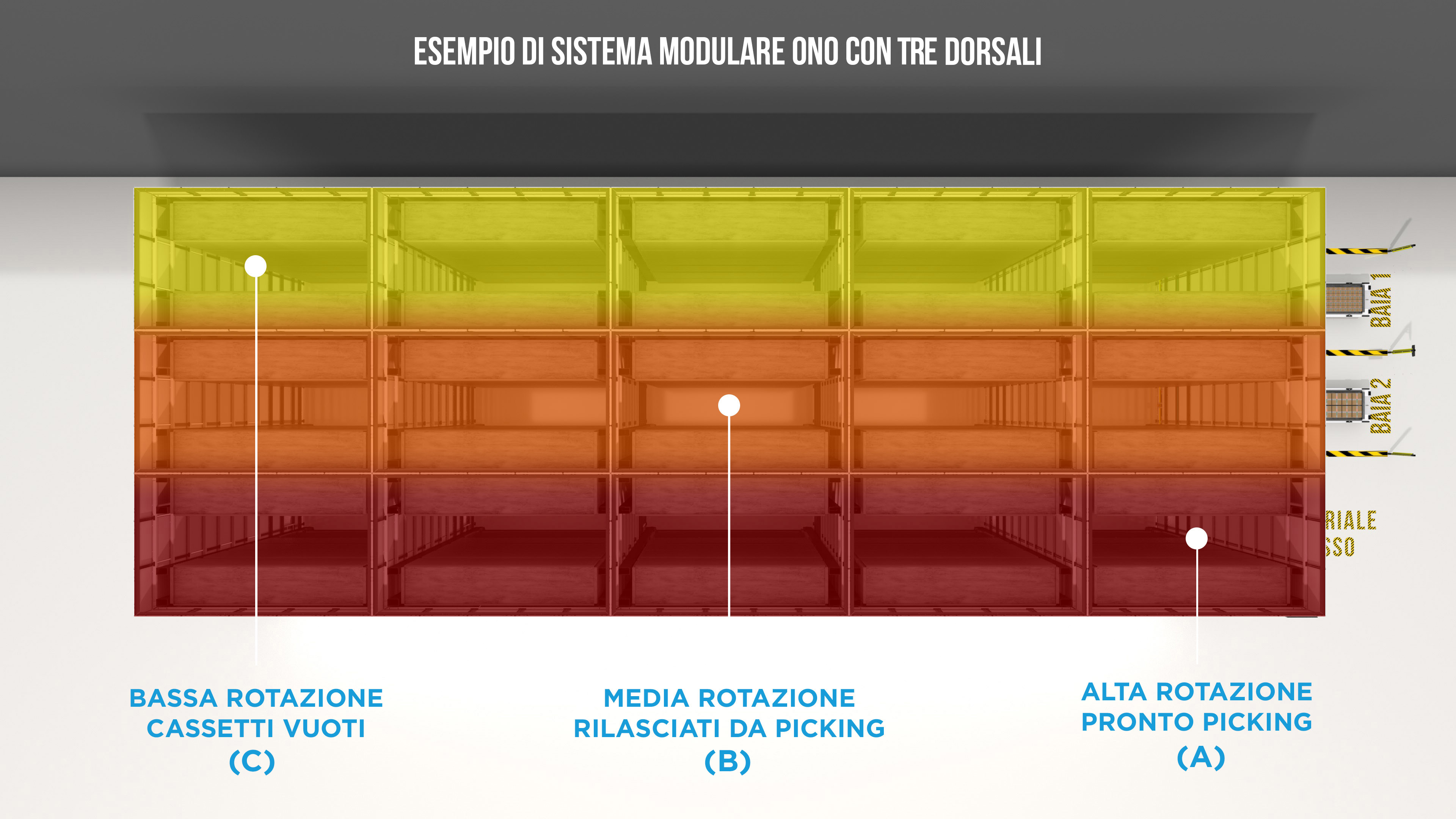Is your problem the speed of order fulfillment and/or picking??
With ONO logistics, it won't be anymore!
I #3How
The #3How through which ONO Lean Logistics solves the problem will be presented in this and the next two articles.
We will talk about speed, how it can be an obstacle for automations in the logistics world, and the solutions we use in ONO to overcome this limitation.
Are you afraid that introducing a vertical warehouse could slow down your picking and delivery operations? Do you think warehouse automation could become the bottleneck of your production rather than facilitating processes?
With ONO Lean Logistics, you don't have to worry, now we'll explain why!
#1How | Splitting References by Rotation Classes Helps Overcome Mechanical Limitations
In ONO, the care and attention dedicated to the development of advanced software platforms play a fundamental role: it effectively allows our systems to overcome the physical limitations of mechanics, shifting the focus to the concept of product availability rather than the mere concept of machine speed.

WANT A TRULY PERFORMING WAREHOUSE? REQUEST YOUR FREE CONSULTATION.
Reference Management in a Multi-Backbone System
With ONO Lean Logistics systems, it's possible to assign to each machine or backbone of machines ("a row composed of multiple modules," note) the management of a certain merchandise category or choose to dedicate it to the storage of a certain rotation class.
The ONO system will then allocate the references based on a well-defined logic, namely according to the degree of priority previously assigned to them. In this way, goods will not be randomly located but will be distributed within the warehouse according to the drivers attributed to the products.
Obviously, each location will correspond to a different service capacity: slots closer to the bays will be those capable of guaranteeing a faster picking speed, and consequently, they will be dedicated to storing goods that are more in demand or have a higher rotation. Thus, the mechanical time of drawer movement becomes only one of the elements to consider in the design of your system, and not even the most important. If the mechanics are indeed constrained by physical limitations (the movement speed cannot progress infinitely), the possibilities of overcoming these constraints through the development of artificial intelligence algorithms are much broader.
Let's take an example: let's imagine having to manage references classifiable into three rotation classes based on the frequency with which they are requested:
• High rotation (A);
• Medium rotation (B);
• Low rotation (C).
The ONO Lean Logistics system will be instructed with algorithms that mimic the storage and distribution logic chosen for each class: each product will be "tagged" with the assignment of a priority [(A)(B)(C)], so that the allocation of references occurs according to the assigned priority level.
While these dynamics are normally managed using established platforms, this does not mean that each project is not treated as a "unique" case, including the development of algorithms dedicated to the specific logics of each client in the preparation of the system.
Moreover, within this process of optimizing service speed, algorithms for internal traffic management are usually included to avoid conflicts during product movements, while respecting the assigned priorities.
Last but not least, the ONO Lean Logistics ICT Development Team supports clients in the evolution of their needs: it will always be possible to modify the storage logics assigned to the system to meet new needs that may arise as business needs change. Thus, the flexibility already widely used in terms of layout and expandability is also applied in a purely IT logic, to ensure the desired performance over time.

